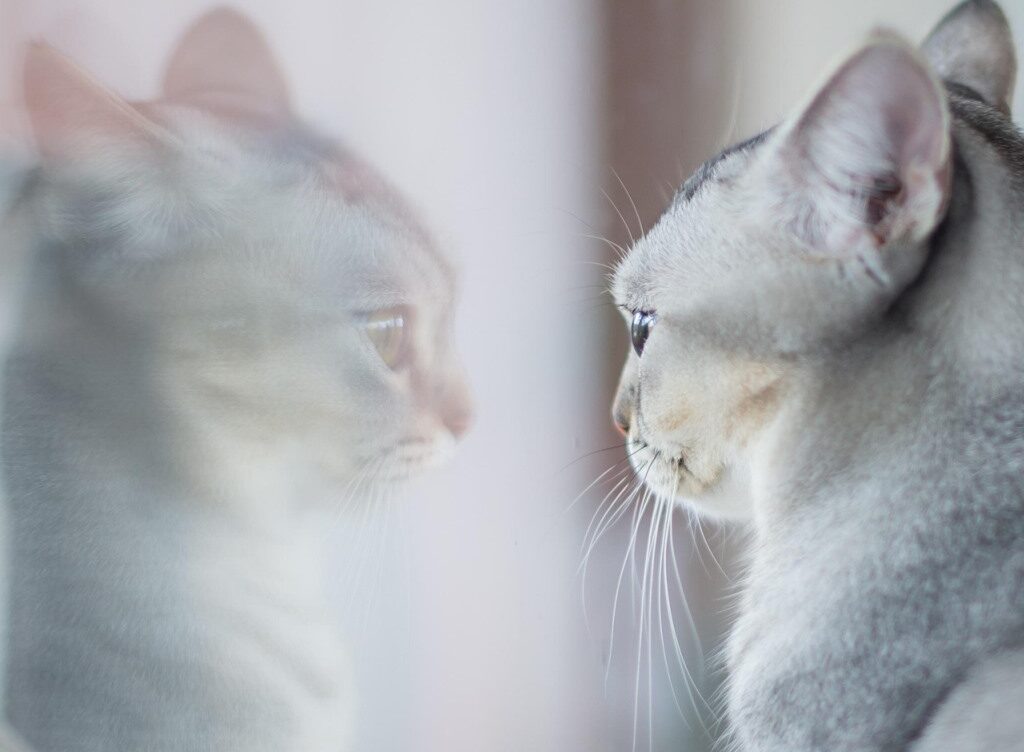
Can Pets Recognize Themselves in Mirrors?
Many pet owners have observed their furry companions reacting to mirrors—some stare curiously, others paw at the glass, and a few even act aggressively. But do pets actually recognize themselves in mirrors, or are they reacting to what they perceive as another animal? The answer lies in how different species process self-awareness.
What Is Mirror Self-Recognition?
Mirror self-recognition (MSR) is the ability of an animal to recognize its own reflection as itself rather than seeing it as another creature. The “mirror test,” developed by psychologist Gordon Gallup Jr. in the 1970s, is commonly used to assess self-awareness in animals. It involves placing a visible mark on the animal in a spot they can only see in the mirror; if the animal notices and investigates the mark on itself, it demonstrates self-recognition.
Do Dogs Recognize Themselves in Mirrors?
Dogs generally do not pass the mirror test, indicating that they likely do not recognize their reflection as themselves. Instead, they rely primarily on scent rather than sight to identify themselves and others. Some dogs may show curiosity or even bark at their reflection, but over time, most lose interest once they realize the reflection does not emit a scent or interact with them as a real dog would.
Do Cats Recognize Themselves in Mirrors?
Like dogs, cats typically do not recognize themselves in mirrors. Many react playfully or defensively upon first encountering their reflection, interpreting it as another cat. However, after repeated exposure, they tend to ignore the mirror, realizing the image does not pose a threat or respond socially.
Which Animals Pass the Mirror Test?
While most pets fail the mirror test, several animals have demonstrated self-recognition, including:
- Great apes (chimpanzees, orangutans, and bonobos)
- Dolphins
- Elephants
- Magpies and some other bird species These species exhibit behaviors such as inspecting a mark on their body, adjusting their posture, or making purposeful movements in response to their reflection.
How Do Pets Perceive Mirrors?
- Visual Interest and Confusion – Some pets initially react strongly to mirrors, mistaking their reflection for another animal.
- Scent-Based Recognition – Since mirrors lack scent cues, pets may quickly disregard the reflection as a real creature.
- Behavioral Habituation – Over time, most pets stop reacting to mirrors as they learn that the reflection does not respond or pose a threat.
Do Mirrors Affect Pet Behavior?
- Some pets may be entertained by their reflections, particularly kittens or puppies exploring their environment.
- Certain pets may display signs of stress or aggression toward their reflection, especially in territorial animals.
- Others may use mirrors as enrichment tools, with birds like parrots sometimes interacting positively with them.
Final Thoughts
While dogs and cats do not appear to recognize themselves in mirrors, their reactions reveal how they perceive the world differently from humans. Rather than relying on visual self-recognition, they depend on scent, touch, and social interactions to navigate their environment. Understanding these differences can help pet owners provide better enrichment and social experiences for their beloved companions.
